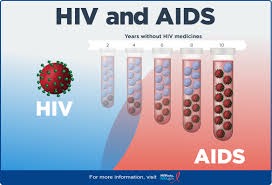The focus on prevention strategies aimed at curbing the HIV epidemic is growing, and therefore screening for HIV has again taken centre stage. Our aim was to establish whether a convenient, non-invasive, HIV test that uses oral fluid was accurate by comparison with the same test with blood-based specimens.
Methods
We did a systematic review and meta-analysis to compare the diagnostic accuracy of a rapid HIV-antibody-based point-of-care test (Oraquick advance rapid HIV-1/2, OraSure Technologies Inc, PA, USA) when used with oral versus blood-based specimens in adults. We searched five databases of published work and databases of five key HIV conferences. Studies we deemed eligible were those focused on adults at risk of HIV; we excluded studies in children, in co-infected populations, with self-reported inferior reference standards, and with incomplete reporting of key data items. We assessed the diagnostic accuracy of testing with oral and blood-based specimens with bivariate regression analysis. We computed positive predictive values (PPVs) in high-prevalence and low-prevalence settings with Bayesian methods.
Findings
In a direct head-to-head comparison of studies, we identified a pooled sensitivity about 2% lower in oral (98·03%, 95% CI 95·85–99·08) than in blood-based specimens (99·68%, 97·31–99·96), but similar specificity (oral 99·74%, 99·47–99·88; blood 99·91%, 99·84–99·95). Negative likelihood ratios were small and similar (oral 0·019, 0.009–0·040; blood 0·003, 0·001–0·034), but positive likelihood ratios differed (oral 383·37, 183·87–799·31; blood 1105·16, 633·14–2004·37). Although in high-prevalence settings PPVs were similar (oral 98·65%, 95% credible interval 85·71–99·94; blood 98·50, 93·10–99·79), in low-prevalence settings PPVs were lower for oral (88·55%, 77·31–95·87) than blood (97·65%, 95·48–99·09) specimens.
Interpretation
Although Oraquick had a high PPV in high-prevelence settings in oral specimens, the slightly lower sensitivity and PPV in low-prevalence settings in oral specimens should be carefully reviewed when planning worldwide expanded initiatives with this popular test.
Funding
Canadian Institutes for Health Research (CIHR KRS 102067).
Previous
Content created and supplied by: THEEBLAMELESSONE (via Opera
News )
